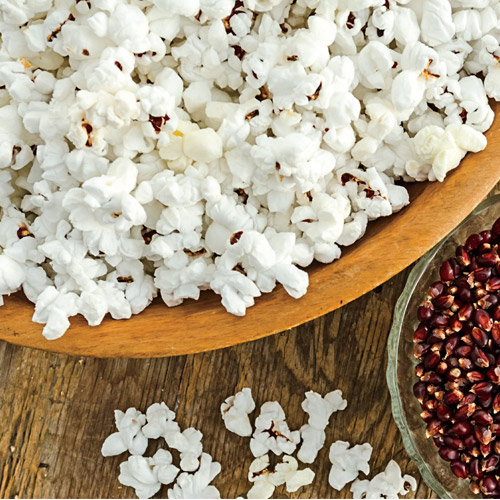
Being a Midwest girl, I like to think I’m a bit of a corn expert. I grew up saying things like “Knee High by Fourth of July”; I’m also a bit of a cyclist, so riding through miles and miles of corn along rural roads on a breezy day- there is no sound quite like it. But the idea of growing corn myself? It’s a bit daunting. Unlike tomatoes, which I can stick in a container on my patio and have a lot of success with, corn needs a bit more- of everything.
First of all, corn needs space. Corn is a heavy feeder with shallow, spreading roots, so it needs a lot of space and preferably soil that has had a nitrogen-releasing plant in it the year before, such as beans or clover. You can use a nitrogen-based food, like Gurney’s Sweet Corn Food to make sure your crop gets the amount of nitrogen it needs. Corn is also wind pollinated, so I can’t just go out and plant one long row of corn; I need to plant at least three rows, and try and plant them in a square or rectangular shape- otherwise it’s time to start hand-pollinating.
Next, corn has a short harvest season. A few ears appear on your plant, ripen, and done. That’s it. No weeks and weeks of corn, like you would have weeks and weeks of tomatoes. One way to avoid this is to plant a variety every 2 weeks for 6 weeks, or plant an early variety, mid season, and late harvest variety all at the same time. If you plant different varieties, be sure to keep them 400 or more yards apart to avoid cross-pollination.

Corn needs sun and water- about one inch of water per week. But avoid spraying your corn with water from above as you can wash away the pollen. Instead, use drip irrigation or water along the roots. Especially keep an eye on watering during pollination, because if there is too little water, you can end up with corn that is stressed and produces a lot of empty kernels.
Because of the shallow roots, corn has a hard time competing with weeds, so invest some time early on into keep your corn rows weed-free. Be careful not to disturb the roots as you remove your weeds. After the first month or so you can apply mulch to prevent weeds from sprouting.
Space, nitrogen, spread out planting over several weeks, provide sun and water, and get rid of weeds. Remember to read your seed packets carefully so you know what to expect, and hopefully you will have delicious sweet corn to share with your family in late summer. Interested in learning more? Check out the varieties that Gurney’s has to offer! Gotta Have It Sweet Corn is a long-time favorite and bestseller – it has the best flavor among any of the sweet corn I’ve tested. And don’t just focus on sweet corn– ornamental corn and popcorn (like Gurney’s Mauveless Hybrid Popcorn) are fun to grow, dry on the stalk, and are a great way to get kids and grandkids involved in gardening. If you have any tips for growing sweet corn, let us know in the comments!

